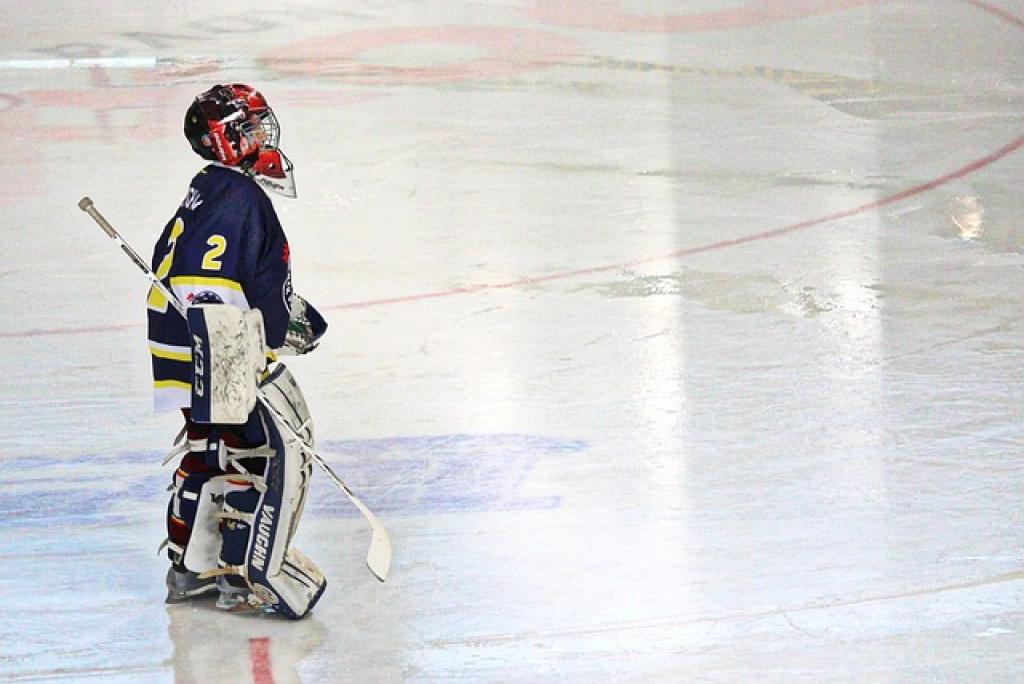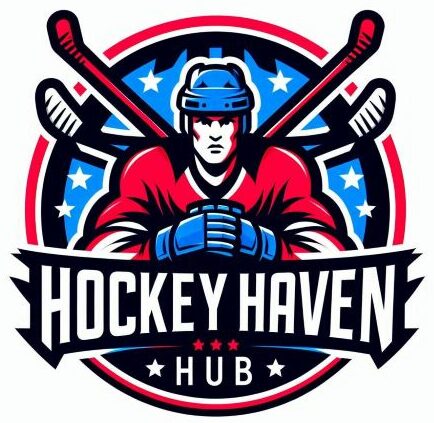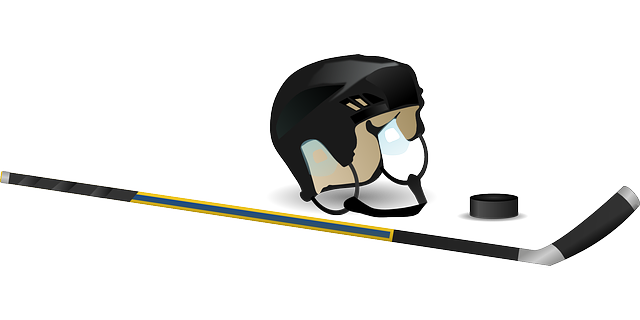Diving into the world of hockey is like opening a gateway to a thrilling, action-packed universe where every slapshot and slippery skate can send your heart racing. But before you glide onto the ice, equipped with just enthusiasm, let’s talk about the essential gear that will get you geared up and game-ready.
Hockey isn’t just about skill; it’s about safety too. With a fortress in the form of a helmet and mouthguard, you’ll protect the noggin that houses all those budding hockey strategies. And that’s just the start!
Whether you’re playing indoors or on a frozen pond, having the right skates makes all the difference. Think of them as your new best friends, ready to carry you across the rink with ease.
We can’t forget about the stick! It’s your wand of wizardry on the ice. Choosing the right size and flex might seem overwhelming, but it’s key to mastering those slapshots.
Together, we’ll break down everything you need from head to toe, ensuring you’re not just ready to play — but ready to truly love one of the coolest sports around.
Understanding the Essential Hockey Equipment Needed
Stepping into the rink is like stepping into a whole new world, but to make sure it feels like home, you’ll need the right gear to suit up and slide into action. Let’s start with the basics.
Helmets are non-negotiable. They keep your head safe from flying pucks and unexpected falls. Be sure it fits snugly and offers good coverage. Your brain is precious, after all!
Next, think about your body. Shoulder pads and elbow pads are essential for protecting against the bumps and checks of the game. They’re like your personal suit of armor, absorbing impacts during intense play.
Gloves are your on-ice grip. They shield your hands from sticks and pucks while letting you handle the stick like a pro. Choose gloves that balance protection and flexibility, so you’re both safe and feel free to move.
Don’t skimp on protective pants and shin guards. They’re the unsung heroes that save you from bruises and scrapes. Paired with solid hockey socks, your legs will thank you for the added defense.
Last but certainly not least, is a sturdy pair of hockey skates. They must fit just right—snug but comfortable—offering both agility and stability. With these basics, you’re well on your way to mastering the rink!

How to Choose the Right Size and Fit for Beginner Players
Starting out, you may feel like you’re drowning in a sea of equipment options. But no worries! Finding the right size and fit can be easy with a few simple tips.
Begin with skates, as they’re essential for your mobility on the ice. They should feel tight, almost like a snug handshake for your feet, with no uncomfortable pinching. Try them on with the same socks you plan to wear on the ice to get the perfect fit.
Proper Fit Matters
Next, ensure your helmet is adjustable. It should cradle your head without slipping around or pressing too tightly. Remember, the chin strap is there to keep it secure, so make sure it’s comfortably fastened.
For pads and gloves, look for comfort and coverage. Your pads should move with you rather than against you, and gloves should allow you to easily bend your fingers while offering protection.
Don’t forget about your stick. Its length and flex are crucial for control. When standing in skates, the stick should touch your chin. Consider the flex — a softer one for beginners can help with better puck handling.
With these tips, you’ll find gear that fits not just your body, but your budding hockey style too!
Top Must-Have Protective Gear for Safety on the Ice
Safety first! Before you glide out onto the ice, it’s crucial to gear up with the right protective equipment. Think of it as your armor in the thrilling world of hockey.
The Essentials: Must-Have Gear
A sturdy helmet is non-negotiable. Opt for one that is certified for impact protection. Make sure it includes a face cage to guard against flying pucks and sticks.
Invest in a good pair of shin guards. They must cover your knees and extend down to your skates, absorbing any hits you might encounter along the way.
Elbow pads and shoulder pads should not be overlooked. They shield you from hard falls and checks, ensuring your joints stay intact and your body’s vital parts stay protected.
Don’t forget a mouthguard! This small piece of gear is invaluable for keeping your pearly whites safe and sound during the game.
Finally, a protective cup and jock shorts or pants with built-in support will keep you comfortable and confident as you tackle the ice. With this essential gear, you’re ready to enjoy hockey safely and securely!
Exploring the Different Types of Sticks and Blades
Choosing the right hockey stick can feel like an art form. There are so many options out there, each with its unique benefits!
First up, consider the material. Wood sticks offer a classic feel and are perfect for beginners or those on a budget. Composite sticks, made from a mix of materials, are lighter and more durable, making them a popular choice for more advanced players.
When it comes to blades, the curve plays a crucial role. A bigger curve can help lift the puck more easily, ideal for powerful shots and passes. Meanwhile, a flatter blade provides more control for stick handling and accuracy.
Length matters too! A longer stick might help with more reach, which is great for defense, while a shorter stick allows for better maneuverability and control—perfect for those quick forwards.
Ultimately, the best stick is the one that feels right in your hands and complements your playing style. Don’t be afraid to test out different types until you find the magic fit!
Proper Care and Maintenance of Your Hockey Equipment
Taking good care of your hockey gear can make a world of difference in performance and longevity. Plus, it helps in keeping those locker room odors at bay!
Start by airing out your gear after every game or practice. Hang everything out to dry in a well-ventilated area. Trust me, your equipment—and your teammates—will thank you for it.
Regular cleaning is key. Use mild soap and warm water to clean gear, especially items that make direct contact with your skin. Some items, like gloves and pads, can even be machine washed on a gentle cycle; just check the labels first!
Don’t forget about your skates. Sharpen them regularly to keep your glide smooth and your turns sharp. Also, wipe down the blades after each use to prevent rust.
Lastly, inspect your equipment for wear and tear. Replace anything damaged to ensure your safety on the ice. Keep your gear in top shape, and it’ll serve you well for many games to come!
Advice on Where to Buy Quality Beginner Hockey Gear
Finding the right place to buy hockey gear can make the whole process so much easier, especially when you’re just starting out. One great option is to check out local sporting goods stores. They often have knowledgeable staff who can help you find the right fit and answer any questions.
Online retailers are also a fantastic resource. Websites like Pure Hockey and HockeyMonkey offer a wide range of options, often at competitive prices. Plus, you can read reviews from other hockey players to get a sense of how the gear holds up.
Don’t overlook second-hand options. Many communities have sports consignment shops or online marketplaces where you can snag some gently-used gear at a fraction of the cost. Just be sure to thoroughly inspect any second-hand items to ensure they’re still in good shape.
Lastly, connect with your local hockey club or team. They might have recommendations for local shops or even offer team discounts at certain stores. Happy gear hunting, and see you on the ice!
Tips for Budget-Friendly Hockey Equipment Options
Playing hockey doesn’t have to break the bank. One simple tip is to prioritize which gear you buy new and where you can save by buying used. Items like helmets and skates are key for safety and performance, so look for those new or barely used.
Another great tip is to take advantage of sales and clearance sections. Stores often discount last season’s models to make way for new inventory. These pieces are usually just as good as the latest ones but come at a much friendlier price point.
You can also organize a gear swap within your local hockey community. This is a win-win situation where everyone gets to trade outgrown or unused gear without spending a dime. Plus, it fosters a sense of community among fellow players.
Finally, consider renting equipment if you’re just starting out. Some rinks and leagues offer rental options for beginners. It’s a practical way to try the sport and figure out what works for you before making a big investment.
The Bottom Line: Equipping Yourself for a Successful Start in Hockey
In wrapping up, it’s clear that starting your hockey journey doesn’t need to overwhelm your budget or your closet. By understanding what’s essential, you are well on your way to gearing up effectively. Remember, the right fit and safety come first, especially when choosing critical pieces like skates and helmets.
Additionally, don’t shy away from exploring second-hand options or keeping an eye out for sales. These strategies can significantly reduce costs while still allowing you to find quality equipment. Engaging with your local hockey community also opens doors for gear swaps and advice from seasoned players. Their experience can guide you to make smart choices without unnecessary spending.
On the practical side, consider trying out rentals if you’re testing the waters. It’s a great way to experience the ice without immediately committing to purchasing all new gear. This approach not only helps you save money but also gives you time to understand what equipment feels right for you personally.
In conclusion, a successful start in hockey doesn’t depend solely on the newest or most expensive equipment. It’s about making informed decisions and prioritizing your needs. By following these tips, you’ll be skating into the rink ready and confident, keeping your focus on what matters most: enjoying the game. So lace up, hit the ice, and have fun out there!

